Agroforestry is a type of agriculture that integrates various trees with crops and livestock within the same area. It stems from indigenous tree-based farming systems, of which remnants can be found throughout the world.
In recent years there has been renewed interest in Agroforestry techniques, promoting it as a possible means to combat climate change and food shortages.
Thanks to the efforts of Permaculture and other Regenerative Agriculture enthusiasts, many people now embrace the idea of “farming with trees.”
In this article, you’ll learn.
- Characteristics Of Agroforestry Systems
- The 3 Types Of Agroforestry Systems
- The Importance Of Agroforestry
- The Benefits Of Agroforestry
- The Disadvantages Of Agroforestry
- Why Agroforestry Is Considered Sustainable
Let’s get started.
Characteristics Of Agroforestry Systems
In its simplest forms, Agroforestry or “Agriculture With Trees” Is the intentional integration of trees into agricultural systems. These trees can be arranged into rows, grids, and contours or dispersed to resemble more natural forests.
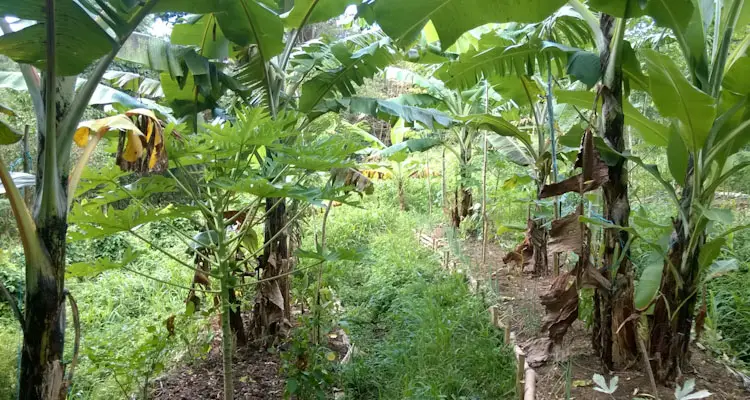
Ideally, trees in Agroforestry systems will be selected based on purpose, lighting, and nutrient requirements. This is evident in systems such as Syntropic Agroforestry, where trees are planted to use light at various levels.
The resulting food forest consists of a diverse ecosystem of plants and animal species capable of producing abundant food, medicines, lumber, and fuel.
What Are The Types Of Agroforestry?
While there are numerous names given to Agroforestry systems, there are only three main types. These are classified by the components which make up the system, namely trees, crops, and livestock. The systems are as follows:
1. Agrisilvicultural Systems (Crops And Trees)
An Agri-Silvi-cultural System combines typical agricultural crops with perennial trees. It is usually used in commercial applications, applying techniques such as alley-cropping for easy access to machinery.
You might notice this arrangement in systems such as Syntropic Farming, developed by Mr. Ernst Götsch.
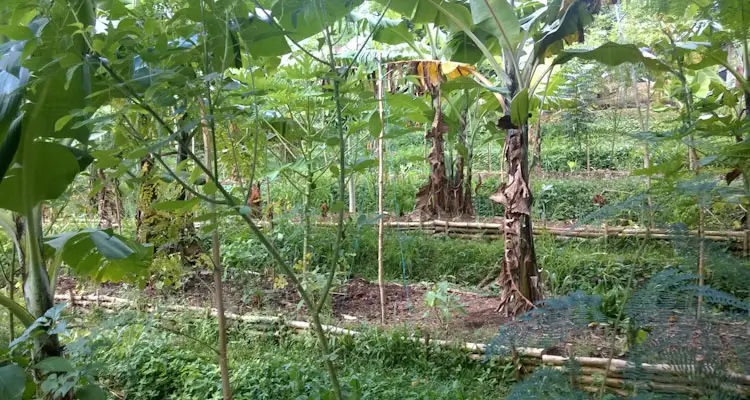
This system is also popular with commercial farmers transitioning from monoculture fields, using the trees to introduce diversity and possibly act as windbreaks.
2. Silvopastoral Systems (Trees, Pasture, and/or Animals)
Silvopastoral Systems focuses on producing food for grazing animals, providing shade, fodder, and other benefits to the animals.
In the Silvopastoral system, hardy trees are usually planted in rows with enough grazing area for animals. In younger systems, the vegetation is grown, harvested, then brought to animals in a different location. However, once established, they are usually rotated between tree rows.
This system requires large acreages and is popular among Regenerative Agriculture enthusiasts. It is shown to actively build inches of soil in relatively short periods.
3. Agrosilvopastoral Systems (Crops, Trees, Pasture, and/or Animals)
Agro-silvo-pastoral Systems combine all the components into one integrated food production system. This is possibly the oldest form of the Agroforestry system, remnants of which can still be found in tropical regions.
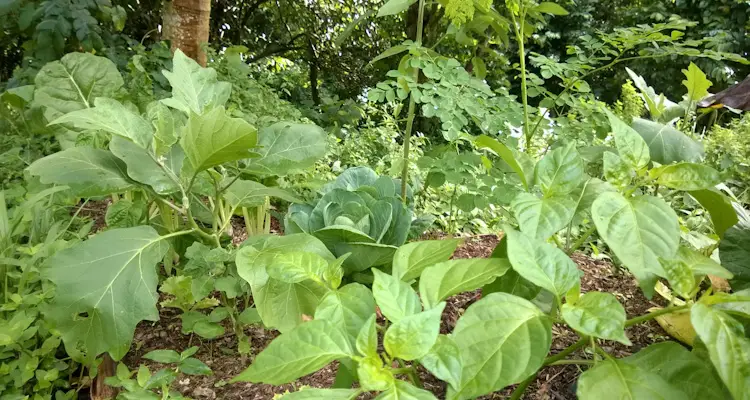
In some cases, they take the form of Home Gardens, incorporating fruit and fuel trees, short crops, and small animals such as chickens, goats, etc.
The trees in the Agrosilvopastoral systems do not follow a specific pattern, except when used as woody hedgerows for particular purposes.
What Is The Importance Of Agroforestry?
Some farmers use Agroforestry techniques to assist in controlling soil erosion and provide organic material to build the soil while creating diverse habitats for various types of wildlife.
It has been heralded as one of the most important measures that we can take to mitigate the effects of climate change, earning the endorsements of many government officials.
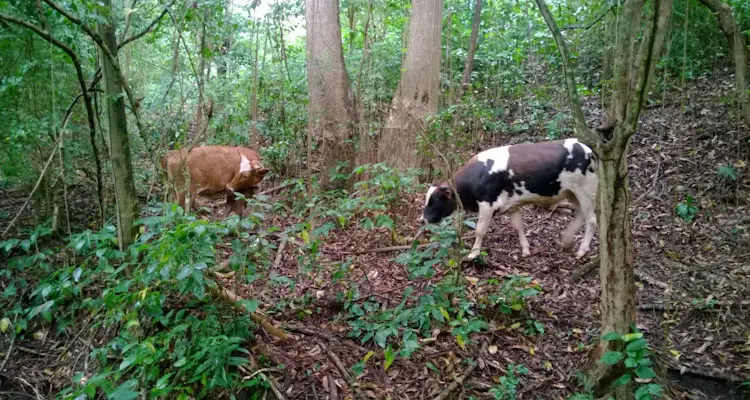
However, reforms are slow, while more lands are cleared for construction, manufacturing, and even farming, resulting in a gradual increase of heat and pollutants in our atmosphere.
As we await necessary regulatory actions to protect our environment, Agroforestry practitioners continue to promote various techniques. They are proven to aid in soil regeneration, air and water purification, and economic benefits for everyone involved.
What are The Benefits Of Agroforestry?
The benefits of Agroforestry vary considerably from system to system. Generally, they include resilience to pests, disease, and climate change, efficient use of nutrients, and diverse production.
Most Agroforestry systems rely on a no-dig approach, with trees that grow for more than 40 years. Carbon is removed from the atmosphere and stored within the soil and trees in a process known as Carbon Sequestration.
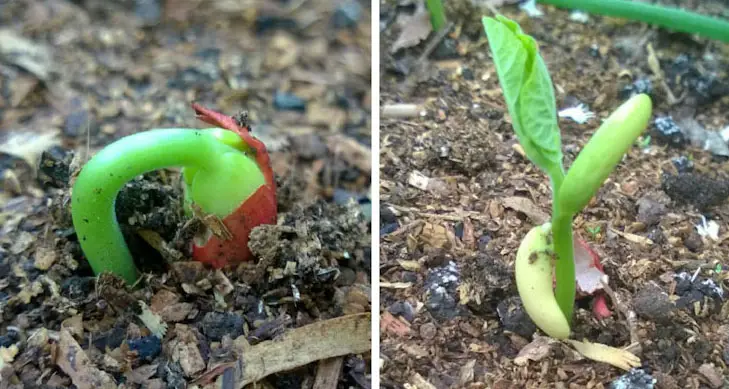
The organic materials that cover the floor of these systems protect the soil from erosion and provide the perfect habitat for microorganisms. Over time, this soil food web can give the plants the nutrients required during its entire Nutritive Cycle.
As the system progresses, it produces an abundant harvest of assorted fruits, vegetables, nuts, and livestock, providing the farmer with a continuous income for years to come.
What Are The Disadvantages Of Agroforestry?
Agroforestry requires knowledge, labor, and financing to be successful. However, this success does not come overnight. Feedback can be slow, requiring the practitioner to have faith in the process.
In a poorly installed system, plants will compete for light, nutrients, and other resources, leading to poor yields, pests, disease, and loss of valuable time.
Even in some properly planned systems, you must wait two to three years before your first harvest. This requires a significant investment until this point, with no guarantee of a profit or even an income.
Is Agroforestry Sustainable?
If planned and managed correctly, Agroforestry can provide sustainable, long-term benefits for farmers and the environment.
While it initially requires a lot of time, energy, and money, these requirements reduce significantly as the systems become established, freeing the farmer of financial and labor burdens.
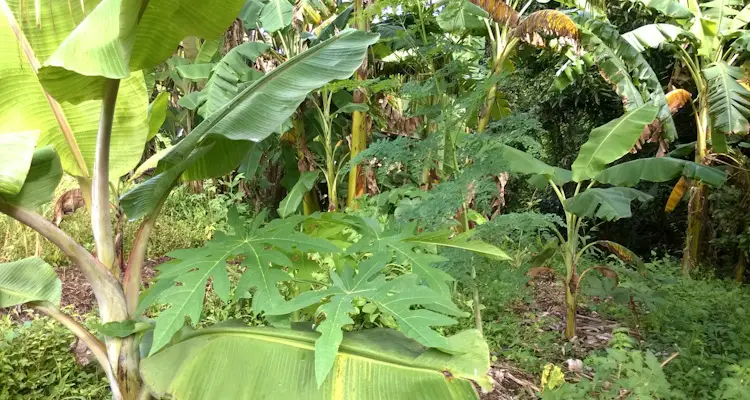
Agroforestry systems provide ecological diversity both below and above the soil, making them resilient to pests, diseases, and even extreme weather.
Final Thoughts
Agroforestry is an ancient technique with a promising future. It presents a sustainable approach to food production with the potential to address global issues.
It draws inspiration from nature, seamlessly merging into existing forests and potentially restoring depleted lands.
Unfortunately, it requires resources that might not readily be available, such as knowledge, money, and time, since it can take years before the systems become productive.
Related Questions
Who Is The Father Of Agroforestry?
Joseph Russell Smith is credited as the father of Agroforestry. He promoted tree-based permanent agriculture, outlining a structured approach in his book Tree Crops: A Permanent Agriculture (1929). However, the concept is based on practices dating back thousands of years
How Does Agroforestry Differ From The Classical Forestry?
Agroforestry is an intentional integration of trees into an Agricultural system. It encourages diversity in the type of crops and trees planted. In contrast, Classical forestry focuses on timber trees to provide building materials in most cases.
Why Is Agroforestry Considered As A Sustainable Practice?
Agroforestry is considered sustainable because it creates incentives to care for and protect the system. It can provide food, shelter, and income for the people involved while having minimal to positive effects on the environment.
References
Agripreneurship Academy. Basics Of Agroforestry. [Video]. Youtube. Uploaded October 19, 2021
Vikaspedia. Agroforestry. vicaspedia.in. Accessed May 2022
Food And Agriculture Organization. Agroforestry. fao.org. Accessed May 2022
Woodland Trust. Agroforestry benefits nature, climate, and farming. woodlandtrust.org. Accessed May 2022
